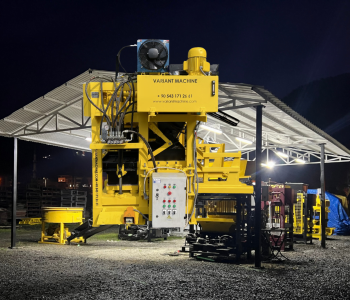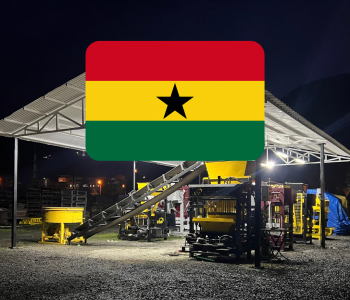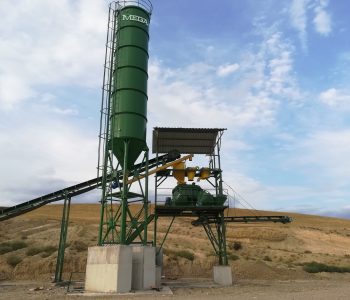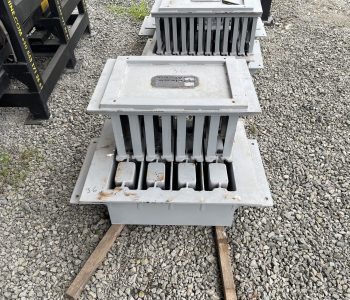How its made: Concrete Blocks
Concrete blocks are integral to modern construction, providing durability, versatility, and cost-effectiveness. The process of manufacturing these blocks has evolved significantly over the years, thanks to advancements in technology and machinery. This article delves into the intricacies of how concrete blocks are made using concrete block machines, shedding light on each step of the production process.
- The Role of Concrete Block Machines
Concrete block machines are sophisticated devices designed to automate the production of concrete blocks. These machines streamline the process, ensuring that blocks are produced quickly, efficiently, and consistently. They come in various types and sizes, from manual machines for smaller operations to fully automated systems for large-scale production.
- The Production Process
- Material Preparation
- Raw Materials: The first step in producing concrete blocks involves gathering the raw materials. These typically include:
- Cement: Acts as the binding agent.
- Aggregates: Such as sand and gravel, provide bulk and strength.
- Water: Initiates the chemical reaction that causes the cement to harden.
- Admixtures: Optional chemicals added to enhance specific properties of the concrete mix, such as setting time or strength.
- Mixing: The raw materials are mixed in precise proportions to create a uniform concrete mix. This is done using a concrete mixer, which combines the cement, aggregates, and water. Some machines include integrated mixers, ensuring the consistency of the mix before it’s poured into molds.
- Molding
- Mold Preparation: Concrete block machines are equipped with molds that shape the concrete mix into blocks of various sizes and types. These molds can be adjusted to produce different block designs, including solid, hollow, or interlocking blocks.
- Pouring and Compaction: The mixed concrete is poured into the molds. To ensure that the concrete is compacted evenly and free of air pockets, the machine uses a vibrating mechanism. This vibration helps achieve the desired density and strength of the blocks.
- Curing
- Initial Curing: After the concrete is poured into the molds and compacted, the blocks are removed from the molds and placed in a curing area. Here, they are kept under controlled conditions to allow the concrete to set and achieve its initial strength.
- Final Curing: The blocks undergo a curing process, which involves maintaining a specific temperature and humidity level. Curing typically lasts for several days and ensures that the blocks reach their full strength and durability. Modern machines may have automated curing chambers to optimize this process.
- Types of Concrete Block Machines
- Manual Machines: These are operated by hand and are suitable for small-scale production. They require manual labor for filling molds, compaction, and removal of blocks.
- Semi-Automatic Machines: These machines automate some aspects of the production process, such as mold filling and compaction, but still require manual intervention for other tasks.
- Fully Automatic Machines: These advanced machines handle the entire production process, from mixing and molding to curing and stacking, with minimal human intervention. They are designed for large-scale operations and high production rates.
- Advantages of Using Concrete Block Machines
- Efficiency: Automated machines significantly speed up the production process, allowing for the rapid manufacture of large quantities of blocks.
- Consistency: Machines ensure uniformity in block size and quality, which is crucial for structural integrity and aesthetic consistency.
- Cost-Effectiveness: Reduced labor costs and minimal material wastage contribute to lower overall production costs.
- Customization: Machines can produce a variety of block types and sizes, catering to diverse construction needs.
- Innovations in Concrete Block Machine Technology
- Smart Automation: Modern machines incorporate advanced control systems and sensors for real-time monitoring and adjustments, enhancing production efficiency and quality.
- Energy Efficiency: Newer models are designed to be more energy-efficient, utilizing less power and incorporating energy-saving technologies.
- Eco-Friendly Practices: Innovations include machines that utilize recycled materials and reduce the environmental impact of the production process.
- Advanced Curing Techniques: Enhanced curing methods, such as accelerated curing processes, improve the strength and durability of the blocks.
- Future Trends
The future of concrete block machines is poised for further advancements. Trends such as increased automation, integration with AI and IoT, and a focus on sustainable practices are expected to shape the industry. These developments will drive the creation of more efficient, versatile, and environmentally friendly block production systems.
Conclusion
Concrete block machines play a pivotal role in the construction industry, transforming raw materials into essential building components with precision and efficiency. Understanding the production process and the innovations driving it helps appreciate the complexity and importance of these machines. As technology continues to evolve, concrete block machines will remain at the forefront of construction innovation, shaping the structures of tomorrow.




